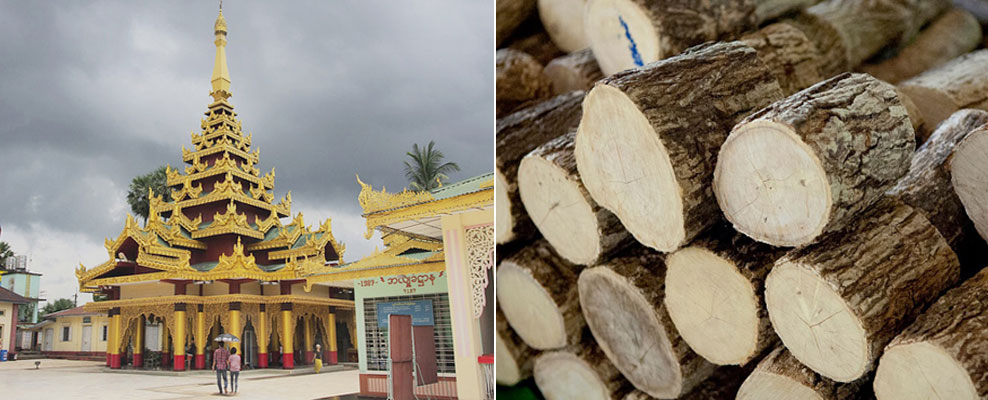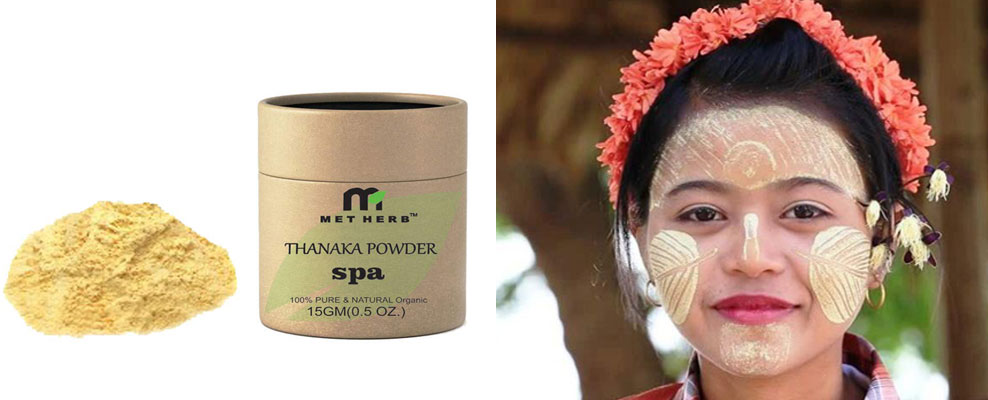
WoT's Hot
Thanaka powder-the secret behind the beauty of womenfolk in Myanmar!
If you have read my series on Myanmar, surely you would have found this country irresistible with its exotic beauty, charm, myriad legends − fascinating scenery, the temples and pagodas and so many other attractions. However, I did not mention the fresh, ethereal beauty of Burmese women, which I feel is equally important in the saga of Myanmar travel diaries. The beauty aspect immediately brings to mind the delicate features of its exiled leader, Aung Sang Syu Ki, which I'm sure must have popped up in your mind also.

Even if you have not visited this gorgeous place, you may have caught sight of images of women in Myanmar in travel magazines with their faces painted with a yellowish, white powder! This is exactly what I propose to tell you in this article of mine. It is none other than Thanaka powder, the secret behind the alluring beauty of little children, young women and the older lot who seem to have no traces of the ravages of time-an ethereal, ageless civilization. When I caught sight of the womenfolk adorning their faces with Thanaka, it piqued my curiosity.

To give you a brief synopsis of the background history of Thanaka powder and it's fascination as a beauty treatment aimed at enhancing the beauty of a woman, I'll have to take you back in time to an erstwhile era where modern beauty treatments did not exist. Thanaka's history can be traced back to the reign of the legendary Queen of Beikthano, nearly 2000 years ago, whose flawless beauty was attributed to the usage of Thanaka. However, it's origin may date back to the very beginning of the century. Research has unearthed the first ever mention of Thanaka in a 14th century poem composed by one of the subjects of King Razadarit. Interestingly, Thanaka's early roots were evident when one reads the history of Myanmar. In 1930, a devastating earthquake dismantled the ancient Shwemawdaw Pagoda. In its aftermath, a kyaukpyin, which is a circular stone with a flat surface and has a channel around the rim for the water to drain into, was revealed amongst the rubble of the pagoda. Experts drew the conclusion that the kyaukpyin was used to make the Thanaka paste. This particular one was traced back to the times of the great monarch, King Bayinnaung who ruled from the year 1550 to 1581. His daughter was believed to have used Thanaka powder in her beauty regime.
It was used in the form of powder or as a cream, which is more convenient to use. And it's usage remains unabated despite the modern developments in the world of beauty treatments. In fact, a lot of today's expensive creams and serums contain Thanaka powder which can be taken out from the bark of the Thanaka trees. However, it's cooling property makes it a great serum for treating sunburn and insect bites as well.Another advantage is that Thanaka can be grown locally with the help of sustainable farming techniques. Yet another interesting fact is that some schools in Myanmar at the elementary level have made it compulsory for children to wear Thanaka as proof to show that they have bathed.
Since the climate is hot in Myanmar due to it being located in the tropical region, people working outdoors have a tanned complexion. However, their faces are firm and unlined with a smooth skin usually free from acne or blemishes. This is again thanks to the usage of Thanaka on a regular basis. The natural beauty treatment is popular because of its multi-faceted usage − as a sunscreen, makeup remover, cleanser too because of its antibacterial properties, and oil control, as it helps in maintaining the ph balance of the skin. Its cleansing property also keeps acne breakouts at bay. The powder keeps the skin supple and fresh throughout the day.
Now to get to the most pertinent question − "where does one source this extremely effective beauty product?"

In Myanmar, Thanaka can be easily found in all local markets as well as those in popular cities like Yangon, Mandalay and Bagan. It can be found in various forms such as powder, cream or the original wood blocks in the traditional way. The vendors used to sell them as individual blocks or bundles to be ground by the customer. But this was cumbersome to say the least in modern days when one has no time for such time consuming procedures. Hence the availability of pre-ground powders and pastes for easy application emerged. However, I discovered that the traditional Burmese preferred its original, organic form. They viewed the packaged version with wariness as they feared that other ingredients may have been used to diminish its flawless properties.
To conclude, I would like you to know that the Thanaka, which has made Myanmar famous in the cosmetic world, is an integral part of Burmese culture. It is used in traditional festivals and the rituals associated with them. Amongst the myriad, the four-day water festival, Thingyan, which is celebrated to usher in the New Year, deserves special mention. This festival, which involves celebrating with water-emerging from the Buddhist belief that water brings happiness, is an extremely fun-filled one. The focus is on the exchange of best wishes. Young and old celebrate this popular festival, splashing water at one another. There is music and dance to bring in color and happiness and there is the Thanaka-making event wherein young women grind the Thanaka bark into a fine powder. This powder is then dissolved in Holy water to get a watery paste to be poured on the idols of the Buddha.
It is clearly evident that Thanaka has played an important role in Myanmar since ancient times. It is a country of vast geographical contours and diverse cultural influences. With its 100 odd ethnic groups and its tumultuous history replete with devastating wars and regional conflicts, Thanaka has emerged as the symbol of pride identified with all Burmese and has brought Unity in Diversity in this country.
Photo credits: Banner Left: exoticvoyages.com; Banner Center: enchantingtravel.com; Banner Right: gomyanmartours.com.
If you have read my series on Myanmar, surely you would have found this country irresistible with its exotic beauty, charm, myriad legends − fascinating scenery, the temples and pagodas and so many other attractions. However, I did not mention the fresh, ethereal beauty of Burmese women, which I feel is equally important in the saga of Myanmar
Other Articles in Wots Hot
What to read next
Featured articles

Welcome Festive Season in Glam, Latin Quarters Launches new #PujoBling Collection with Monami Ghosh
by WOT








































